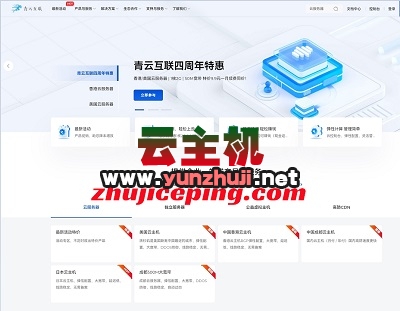Notification 类和 NotificationManager 来实现状态栏添加图标。以下是一个简单的函数实例:,,“java,public void addStatusBarIcon(Context context) {, Notification notification = new Notification.Builder(context), .setSmallIcon(R.drawable.icon), .setContentTitle("状态栏通知"), .setContentText("这是一个示例通知"), .build();, , NotificationManager notificationManager = (NotificationManager) context.getSystemService(Context.NOTIFICATION_SERVICE);, notificationManager.notify(1, notification);,},“,,这个函数会在设备的状态栏上显示一个带有指定图标的通知。 Android 实现状态栏添加图标的函数实例
在Android开发中,向状态栏添加图标是一项常见的需求,特别是在通知和系统托盘中显示应用的状态或信息,本文将详细介绍如何在Android应用中实现这一功能,包括代码示例、步骤说明以及相关注意事项。
准备工作
1.1 创建项目
确保你已经安装了Android Studio,并创建一个新的Android项目。
1.2 配置权限
在你的AndroidManifest.xml文件中,添加必要的权限:
<uses-permission android:name="android.permission.POST_NOTIFICATIONS" />
注意:POST_NOTIFICATIONS权限仅适用于Android 13及更高版本,对于较低版本的Android,你不需要此权限。
1.3 定义图标资源
在res/drawable目录下添加你的图标文件(例如ic_notification.png),并在res/values/strings.xml中定义通知标题和内容:
<resources>
<string name="app_name">MyApp</string>
<string name="notification_title">My Notification</string>
<string name="notification_content">This is a sample notification content.</string>
</resources> 2. 创建通知通道(适用于Android 8.0及以上)
从Android 8.0(API级别26)开始,所有通知都必须分配到一个频道,创建一个通知频道的代码如下:
import android.app.NotificationChannel;
import android.app.NotificationManager;
import android.content.Context;
import android.os.Build;
public class NotificationHelper {
private static final String CHANNEL_ID = "my_channel_id";
private static final String CHANNEL_NAME = "My Channel";
private static final String CHANNEL_DESC = "This is my channel description";
public static void createNotificationChannel(Context context) {
if (Build.VERSION.SDK_INT >= Build.VERSION_CODES.O) {
NotificationChannel channel = new NotificationChannel(CHANNEL_ID, CHANNEL_NAME, NotificationManager.IMPORTANCE_DEFAULT);
channel.setDescription(CHANNEL_DESC);
NotificationManager manager = context.getSystemService(NotificationManager.class);
if (manager != null) {
manager.createNotificationChannel(channel);
}
}
}
} 在应用程序启动时调用此方法:
@Override
protected void onCreate(Bundle savedInstanceState) {
super.onCreate(savedInstanceState);
setContentView(R.layout.activity_main);
NotificationHelper.createNotificationChannel(this);
} 创建通知并显示
使用NotificationCompat.Builder类来构建通知,并使用NotificationManager来显示通知,以下是一个完整的示例:
import android.app.Notification;
import android.app.NotificationChannel;
import android.app.NotificationManager;
import android.content.Context;
import android.graphics.BitmapFactory;
import android.graphics.Color;
import android.os.Build;
import androidx.annotation.RequiresApi;
import androidx.core.app.NotificationCompat;
import androidx.core.app.NotificationManagerCompat;
public class MainActivity extends AppCompatActivity {
@Override
protected void onCreate(Bundle savedInstanceState) {
super.onCreate(savedInstanceState);
setContentView(R.layout.activity_main);
// 创建通知通道
createNotificationChannel();
// 创建并显示通知
showNotification();
}
private void createNotificationChannel() {
if (Build.VERSION.SDK_INT >= Build.VERSION_CODES.O) {
String channelId = "my_channel_id";
CharSequence channelName = "My Channel";
String channelDescription = "This is my channel description";
int importance = NotificationManager.IMPORTANCE_DEFAULT;
NotificationChannel channel = new NotificationChannel(channelId, channelName, importance);
channel.setDescription(channelDescription);
NotificationManager notificationManager = getSystemService(NotificationManager.class);
notificationManager.createNotificationChannel(channel);
}
}
private void showNotification() {
// 创建通知内容
NotificationCompat.Builder builder = new NotificationCompat.Builder(this, "my_channel_id")
.setSmallIcon(R.drawable.ic_notification) // 设置小图标
.setContentTitle("My Notification") // 设置通知标题
.setContentText("This is a sample notification content.") // 设置通知内容
.setPriority(NotificationCompat.PRIORITY_DEFAULT) // 设置优先级
.setAutoCancel(true) // 点击通知后自动取消
.setShowWhen(true) // 显示时间戳
.setColor(Color.BLUE) // 设置通知颜色
.setLargeIcon(BitmapFactory.decodeResource(getResources(), R.drawable.ic_notification)); // 设置大图标
// 显示通知
NotificationManagerCompat notificationManager = NotificationManagerCompat.from(this);
notificationManager.notify(1, builder.build()); // 通知ID为1
}
} 自定义通知布局(可选)
如果默认的通知布局不能满足你的需求,你可以自定义通知布局,在res/layout目录下创建一个XML布局文件(例如notification_custom.xml):
<?xml version="1.0" encoding="utf-8"?>
<RelativeLayout xmlns:android="http://schemas.android.com/apk/res/android"
android:layout_width="match_parent"
android:layout_height="wrap_content"
android:padding="10dp">
<ImageView
android:id="@+id/image"
android:layout_width="wrap_content"
android:layout_height="wrap_content"
android:src="@drawable/ic_notification" />
<TextView
android:id="@+id/title"
android:layout_width="wrap_content"
android:layout_height="wrap_content"
android:layout_toEndOf="@id/image"
android:layout_marginStart="10dp"
android:text="Custom Title"
android:textSize="16sp" />
<TextView
android:id="@+id/text"
android:layout_width="wrap_content"
android:layout_height="wrap_content"
android:layout_below="@id/title"
android:layout_toEndOf="@id/image"
android:layout_marginTop="5dp"
android:text="Custom Content"
android:textSize="14sp" />
</RelativeLayout> 在代码中使用自定义布局:
private void showCustomNotification() {
// 获取自定义布局的RemoteViews对象
RemoteViews remoteViews = new RemoteViews(this.getPackageName(), R.layout.notification_custom);
remoteViews.setImageViewResource(R.id.image, R.drawable.ic_notification);
remoteViews.setTextViewText(R.id.title, "Custom Title");
remoteViews.setTextViewText(R.id.text, "Custom Content");
NotificationCompat.Builder builder = new NotificationCompat.Builder(this, "my_channel_id")
.setSmallIcon(R.drawable.ic_notification) // 小图标仍然需要设置
.setStyle(new NotificationCompat.DecoratedCustomViewStyle()) // 设置自定义样式
.setCustomContentView(remoteViews) // 设置自定义视图
.setPriority(NotificationCompat.PRIORITY_DEFAULT) // 设置优先级
.setAutoCancel(true) // 点击通知后自动取消
.setShowWhen(true); // 显示时间戳
// 显示通知
NotificationManagerCompat notificationManager = NotificationManagerCompat.from(this);
notificationManager.notify(2, builder.build()); // 通知ID为2
} 更新通知(可选)
有时你可能需要更新已经显示的通知,可以使用相同的通知ID来更新通知:
private void updateNotification() {
NotificationCompat.Builder builder = new NotificationCompat.Builder(this, "my_channel_id")
.setSmallIcon(R.drawable.ic_notification)
.setContentTitle("Updated Title")
.setContentText("This is the updated content of the notification.")
.setPriority(NotificationCompat.PRIORITY_DEFAULT)
.setAutoCancel(true)
.setShowWhen(true)
.setLargeIcon(BitmapFactory.decodeResource(getResources(), R.drawable.ic_notification));
// 更新通知
NotificationManagerCompat notificationManager = NotificationManagerCompat.from(this);
notificationManager.notify(1, builder.build()); // 使用相同的通知ID(1)进行更新
} 删除通知(可选)
当你不再需要显示某个通知时,可以将其删除:
private void cancelNotification() {
NotificationManagerCompat notificationManager = NotificationManagerCompat.from(this);
notificationManager.cancel(1); // 使用通知ID(1)进行删除
} 处理通知点击事件(可选)
可以为通知设置点击事件,当用户点击通知时执行特定的操作:
private void showNotificationWithPendingIntent() {
Intent intent = new Intent(this, TargetActivity.class); // 目标活动
PendingIntent pendingIntent = PendingIntent.getActivity(this, 0, intent, PendingIntent.FLAG_UPDATE_CURRENT | PendingIntent.FLAG_IMMUTABLE);
NotificationCompat.Builder builder = new NotificationCompat.Builder(this, "my_channel_id")
.setSmallIcon(R.drawable.ic_notification)
.setContentTitle("Notification with PendingIntent")
.setContentText("Tap to open TargetActivity")
.setPriority(NotificationCompat.PRIORITY_DEFAULT)
.setAutoCancel(true)
.setShowWhen(true)
.setContentIntent(pendingIntent) // 设置PendingIntent
.setLargeIcon(BitmapFactory.decodeResource(getResources(), R.drawable.ic_notification));
// 显示通知
NotificationManagerCompat notificationManager = NotificationManagerCompat.from(this);
notificationManager.notify(3, builder.build()); // 通知ID为3
} 保持简洁:尽量保持通知内容的简洁明了,避免过多的文字。
使用适当的图标:选择合适的图标可以提高用户的识别度。
考虑用户体验:确保通知不会频繁打扰用户,合理设置通知的频率和条件。
测试不同设备:在不同设备和Android版本上测试通知的显示效果,以确保兼容性。
遵循Material Design指南:遵循Google的Material Design指南,提高用户界面的一致性和美观性。
优化性能:在后台任务中创建和管理通知,避免在主线程中进行耗时操作。
处理异常情况:在创建和管理通知时,处理可能出现的异常情况,如权限不足或API不兼容等。
以上内容就是解答有关“android实现状态栏添加图标的函数实例”的详细内容了,我相信这篇文章可以为您解决一些疑惑,有任何问题欢迎留言反馈,谢谢阅读。

 云主机测评网
云主机测评网

















最新评论
本站CDN与莫名CDN同款、亚太CDN、速度还不错,值得推荐。
感谢推荐我们公司产品、有什么活动会第一时间公布!
我在用这类站群服务器、还可以. 用很多年了。